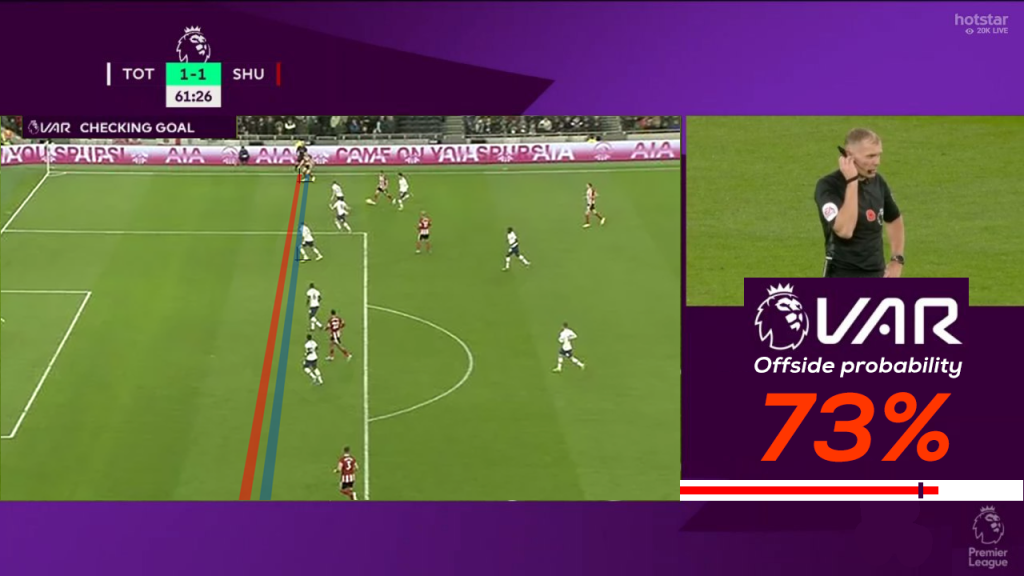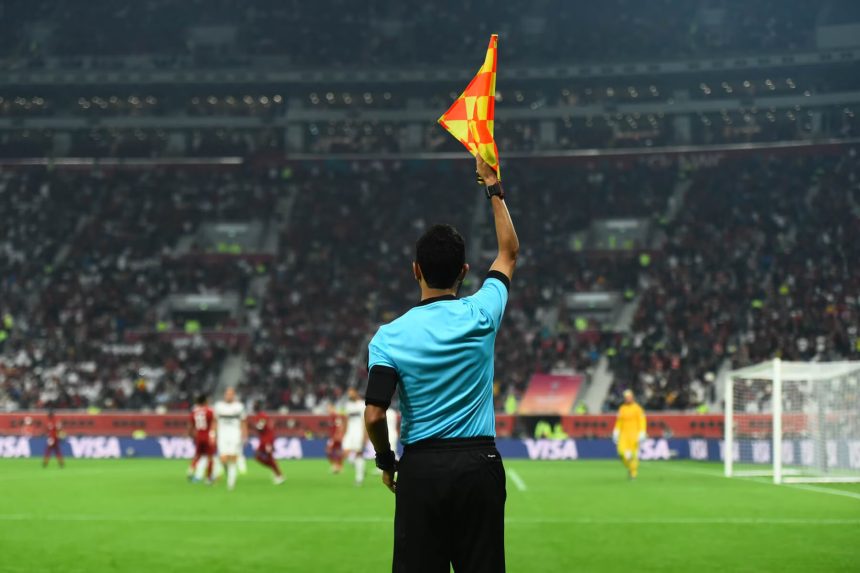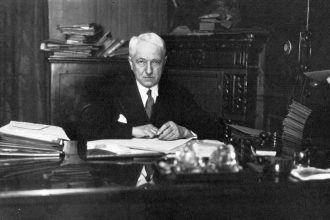1. Offside position
It is not an offense to be in an offside position. A player is in an offside position if:
- any part of the head, body, or feet is in the opponent’s half (excluding the halfway line) and
- any part of the head, body, or feet is nearer to the opponent’s goal line than both the ball and the second-last opponent
The hands and arms of all players, including the goalkeepers, are not considered. For the purposes of determining offside, the upper boundary of the arm is in line with the bottom of the armpit.
A player is not in an offside position if level with the:
- second-last opponent or
- last two opponents
2. Offside offence
A player in an offside position at the moment the ball is played or touched* by a team-mate is only penalized on becoming involved in active play by:
- interfering with play by playing or touching a ball passed or touched by a team-mate or
- interfering with an opponent by: preventing an opponent from playing or being able to play the ball by clearly obstructing the opponent’s line of vision or challenging an opponent for the ball or clearly attempting to play a ball which is close when this action impacts on an opponent or making an obvious action which clearly impacts on the ability of an opponent to play the ball
*The first point of contact of the ‘play’ or ‘touch’ of the ball should be used
or
- gaining an advantage by playing the ball or interfering with an opponent when it has: rebounded or been deflected off the goalpost, crossbar or an opponent been deliberately saved by any opponent
A player in an offside position receiving the ball from an opponent who deliberately played* the ball, including by deliberate handball, is not considered to have gained an advantage unless it was a deliberate save by any opponent.
*‘Deliberate play’ (excluding deliberate handball) is when a player has control of the ball with the possibility of:
- passing the ball to a team-mate;
- gaining possession of the ball; or
- clearing the ball (e.g. by kicking or heading it)
If the pass, attempt to gain possession or clearance by the player in control of the ball is inaccurate or unsuccessful, this does not negate the fact that the player ‘deliberately played’ the ball.
The following criteria should be used, as appropriate, as indicators that a player was in control of the ball and, as a result, can be considered to have ‘deliberately played’ the ball:
- The ball travelled from a distance and the player had a clear view of it
- The ball was not moving quickly
- The direction of the ball was not unexpected
- The player had time to coordinate their body movement, i.e. it was not a case of instinctive stretching or jumping, or a movement that achieved limited contact/control
- A ball moving on the ground is easier to play than a ball in the air
A ‘save’ is when a player stops, or attempts to stop, a ball that is going into or very close to the goal with any part of the body except the hands/arms (unless the goalkeeper is within the penalty area). In situations where:
- a player moving from or standing in, an offside position is in the way of an opponent and interferes with the movement of the opponent towards the ball this is an offside offense if it impacts on the ability of the opponent to play or challenge for the ball; if the player moves into the way of an opponent and impedes the opponent’s progress (e.g blocks the opponent) the offense should be penalized under Law 12
- a player in an offside position is moving towards the ball with the intention of playing the ball and is fouled before playing or attempting to play the ball, or challenging an opponent for the ball, the foul is penalized as it has occurred before the offside offense
an offense is committed against a player in an offside position who is already playing or attempting to play the ball, or challenging an opponent for the ball, the offside offense is penalized as it has occurred before the foul challenge.

3. No offence
There is no offside offense if a player receives the ball directly from:
- a goal kick
- a throw-in
- a corner kick
4. Offences and sanctions
If an offside offense occurs, the referee awards an indirect free kick where the offense occurred, including if it is in the player’s own half of the field of play. A defending player who leaves the field of play without the referee’s permission shall be considered to be on the goal line or touchline for the purposes of offside until the next stoppage in play or until the defending team has played the ball toward the halfway line and it is outside its penalty area. If the player left the field of play deliberately, the player must be cautioned when the ball is next out of play. An attacking player may step or stay off the field of play not to be involved in active play. If the player re-enters from the goal line and becomes involved in play before the next stoppage in play, or the defending team has played the ball towards the halfway line and it is outside its penalty area, the player shall be considered to be positioned on the goal line for the purposes of offside. A player who deliberately leaves the field of play and re-enters without the referee’s permission and is not penalized for offside and gains an advantage must be cautioned. If an attacking player remains stationary between the goalposts and inside the goal as the ball enters the goal, a goal must be awarded unless the player commits an offside offense or Law 12 offense in which case play is restarted with an indirect or direct free kick.
By: IFAB Laws of the Game 2023-24





